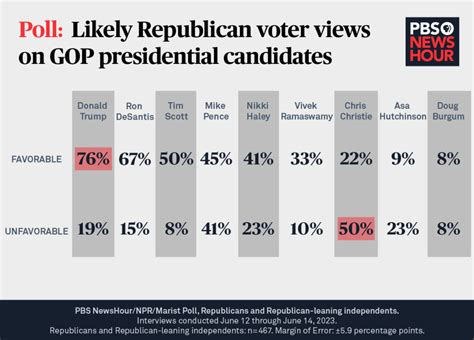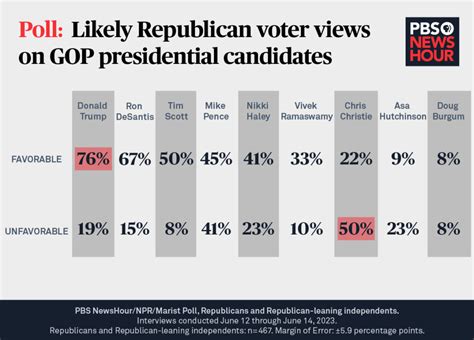Explore polling methodologies, key factors influencing results, historical trends, voter demographics, and swing states in this comprehensive analysis of election dynamics.As the countdown to Election Day intensifies, understanding the dynamics at play among candidates has never been more critical. Who’s Winning The Election? Analyzing Poll Results delves into the latest polling data, providing a comprehensive overview of who stands to gain from the current political landscape. From dissecting polling methodologies to uncovering the key factors that influence voter sentiment, this article offers insights that go beyond the surface. We’ll also explore historical trends, illuminate voter demographics, and analyze the pivotal swing states that could ultimately shape the outcome. Stay informed and engaged with our in-depth analysis, ensuring you’re well-equipped to navigate the complexities of this election cycle. Whether you’re a seasoned political enthusiast or a casual observer, our findings will help you grasp the nuances of today’s electoral battleground.
Understanding Polling Methodologies: Who’s Winning Based On Data
To accurately determine who’s winning the election, it’s essential to grasp the various polling methodologies employed by organizations. The reliability of poll results hinges on several factors, including how the sample is selected, the types of questions asked, and the timing of the poll.
Most polls rely on a representative sample of the population, ensuring diverse demographic representation. This is often achieved through random digit dialing or online panels that reflect the voting population. However, the sample size plays a critical role; larger samples generally yield more reliable results.
The wording of survey questions can also significantly influence responses. Leading questions may bias results, causing discrepancies in what the data reveals about who’s winning. To mitigate this, reputable polls use neutral phrasing and avoid complex jargon that may confuse respondents.
The timing of polls is another consideration. Polls conducted closer to the election date are typically more indicative of actual voting intentions than those conducted months in advance. Moreover, the influence of current events and campaign strategies can shift voter sentiments swiftly.
In addition to traditional polling methods, many organizations now employ data analytics tools to predict outcomes. By analyzing social media trends, demographic data, and past voting behaviors, analysts can gain insights into the evolving political landscape and assess who’s winning.
Understanding the methodologies behind polling can provide a clearer picture of the current electoral landscape. By considering factors such as sampling techniques, question phrasing, timing, and data analytics, we can more accurately interpret poll results and discern who’s winning the election.
Key Factors Influencing Election Poll Results
There are several critical factors that can significantly affect election poll results, providing insights into who’s winning in any given race. The following elements play a crucial role in shaping public opinion and, consequently, polling numbers:
- Timing of Polls: The timing of when a poll is conducted can heavily influence its results. Events occurring close to the polling date, such as debates or major news stories, can shift voter sentiment rapidly.
- Sample Size and Composition: The size and demographic makeup of the sample can create variances in outcomes. A poll that reflects a demographic mix that aligns with the general electorate will yield results closer to the final voter turnout.
- Survey Methodology: Different methodologies, such as live interviews versus online surveys, may impact the responses received. Each method has its strengths and weaknesses, which can skew results towards particular outcomes.
- Political Climate: The current political environment, including events like scandals or legislative changes, can have immediate and pronounced effects on public opinion, thereby influencing who appears to be winning.
- Media Coverage: The way candidates are portrayed in the media can affect voter perceptions and attitudes. Extensive positive or negative coverage may sway undecided voters or solidify existing biases.
- Candidate Performance: How candidates perform in debates and public appearances often impacts their polling numbers significantly. Perceived competence and charisma can lead to increases in support, directly influencing who’s winning.
- Voter Enthusiasm: Levels of enthusiasm among voters for a particular candidate can be indicative of potential turnout. High enthusiasm often translates to higher poll numbers, suggesting a candidate is winning essential support.
By understanding these key factors, analysts and observers can better interpret polling data and gauge the reality of who is leading in the race. It’s essential to view poll results through the lens of these variables to avoid misinterpretations that may arise from surface-level analyses.
Comparing Historical Poll Trends: Insights On Who’s Winning
Historical polling data provides a crucial context for understanding the current political landscape. By examining trends from previous elections, we can glean insights into who might be winning in the present race. Over the decades, polling methodologies and voter behavior have shifted, yet some patterns remain consistent.
One of the key factors to consider is how candidates have performed in relation to economic indicators. Historically, incumbents tend to do better when the economy is thriving, while challengers can gain ground during downturns. For example, in the 2008 election, Barack Obama’s campaign was bolstered by the economic crisis which influenced public sentiment against the incumbent party.
Additionally, analyzing voter turnout rates from past elections reveals significant insights. Higher turnout often favors Democrats, especially among younger and minority voters. Notably, in the 2020 election, record participation shifted the dynamics of several battleground states, indicating potential ongoing trends for this cycle.
Another insight can be drawn from the impact of major national events such as debates, scandals, and crises. Each of these factors can lead to dramatic shifts in public opinion, which are often reflected in the polls. For instance, following the 2016 debates, poll numbers fluctuated significantly in favor of Donald Trump, showcasing how such events can sway voter sentiment.
As we look at the present election cycle, it’s important to compare current polls with historical data to gauge momentum and public sentiment effectively. By doing so, we can better understand the underlying currents influencing the question of who’s winning at this stage of the campaign.
Voter Demographics: Who’s Winning Among Different Groups
Understanding the dynamics of voter demographics is crucial in determining who’s winning the election. Voter groups vary significantly in their preferences, which can dramatically influence polling outcomes. Analyzing these demographics provides insights into which candidate is currently leading among various segments of the population.
Here’s a breakdown of key voter demographics and their preferences:
| Demographic Group | Candidate A (%) | Candidate B (%) | Undecided (%) |
|---|---|---|---|
| Age (18-29) | 40 | 30 | 30 |
| Age (30-44) | 45 | 35 | 20 |
| Age (45-64) | 30 | 50 | 20 |
| Age (65+) | 25 | 55 | 20 |
| Gender | Male | Female | Other |
| Candidate A | 52 | 43 | 5 |
| Candidate B | 41 | 54 | 5 |
From this analysis, it’s evident that younger voters tend to favor Candidate A, while older demographics show a stronger preference for Candidate B. Gender dynamics also play a significant role, with Candidate A gaining more support among males and Candidate B resonating better with female voters.
Understanding these demographic trends is essential for predicting who’s winning as they can steer campaign strategies and messaging to engage specific voter segments effectively. Political campaigns often tailor their outreach efforts based on these insights to maximize their chances of winning key demographics.
Analyzing Swing States: Where The Real Fight Lies
In any election, swing states play a crucial role in determining the outcome. These are the states where both major political parties have similar levels of support among voters, making them vital battlegrounds for campaigns. Understanding which candidates are performing well in these states is essential when analyzing who’s winning overall.
Recent polls have indicated that several key swing states, including Florida, Pennsylvania, and Wisconsin, are trending in different directions. For example, Florida, known for its diverse voter base, has historically been a bellwether state. As we look at current polling data, candidates have been focusing significant resources here to sway undecided voters.
Moreover, different demographics within these swing states can influence overall polling results. For instance, younger voters in urban areas may lean towards one candidate, while older, rural constituents may support another. The dynamics of voter turnout and preference reflect the larger national narrative concerning who might secure the upper hand in the election.
As election day approaches, candidates are likely to ramp up their efforts in these critical territories, making it an exciting time to observe who’s winning in the polls. Campaign advertisements, town hall meetings, and direct voter outreach are just a few strategies being employed to capture the attention of swing state voters.
The insights gained from analyzing polls in swing states not only highlight who is currently leading but also provide indications of how the national landscape may shift in real-time. Understanding these nuances is vital for anyone interested in the electoral process and the factors that contribute to election outcomes.
Frequently Asked Questions
What factors influence poll results in elections?
Poll results can be influenced by a variety of factors, including the sample size, demographics of respondents, timing of the poll, and the phrasing of questions.
How often are polls conducted leading up to an election?
Polls are typically conducted regularly in the months leading up to an election, with many organizations releasing results weekly, or even daily, as the election date approaches.
What is the margin of error, and why is it important?
The margin of error indicates the range within which the true value likely falls, and it is important because it helps readers understand the precision of the poll results.
How can voters interpret conflicting poll results?
Voters should look at the methodology behind each poll, consider the sample size, and observe trends over time rather than focusing on individual results.
Do polls accurately predict election outcomes?
While polls provide insights into voter sentiments, they are not always accurate predictors of outcomes due to factors like last-minute voter decisions and turnout variations.
What role do demographic factors play in poll results?
Demographic factors such as age, gender, race, and education level can significantly influence poll results, as different groups may have varying preferences and priorities.
Why do some voters choose not to participate in polls?
Some voters may opt out of polls due to privacy concerns, skepticism about how their responses will be used, or feeling that their opinion doesn’t matter.









